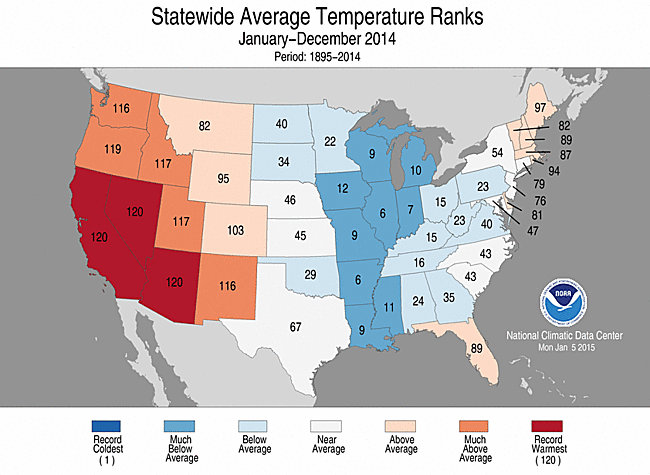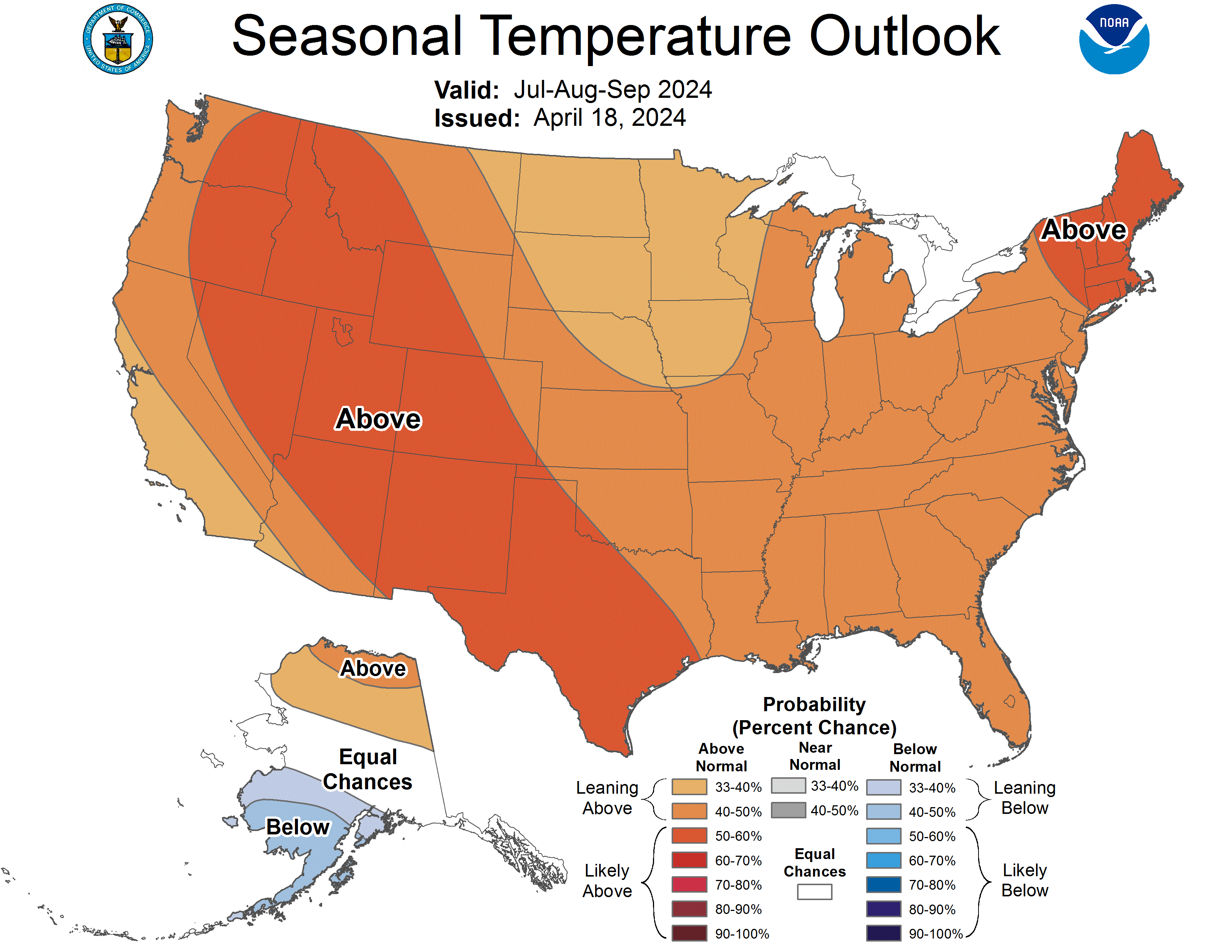by Alex Carr Johnson, High Country News, January 13, 2015
At first glance, the 2014 US Climate Report released this week by the National Oceanic and Atmospheric Agency (NOAA) might look like the new, hotter normal. Overall, the average annual temperature in the lower 48 states was 0.5 °F above the 20th century average. That makes 2014 the 18th warmer-than-average year in a row and the 34th warmest year on record.
For those of us who live in the West, these numbers come as no surprise. All 11 Western states experienced warmer-than-normal years. Eight of them landed in the top-ten hottest years on record, with California, Nevada and Arizona all experiencing their hottest years ever. Alaska also had a record-breaking hot year, with Anchorage never dipping below 0 °F at any point in 2014, a historic first.

Looking east of the Rockies, however, the story quickly becomes, well, weirder. South Dakota had the 34th coldest year on record, and Oklahoma the 29th coldest. Seven states in the middle of the country, from Wisconsin to Louisiana, experienced top-ten most frigid years on record. Most notably, a polar vortex brought the Arctic to the Midwest for the first few weeks of 2014, but cooler-than-normal blasts moved through the region multiple times throughout the rest of the year.
While regional weather differences are nothing new, the prolonged hot-cold divide of 2014 was unprecedented. "Never before have such large areas of the country experienced such radically different temperature extremes," Rebecca Lindsey, managing editor for Climate.gov, explained in a post this past August. From January to July, nearly 40% of the country was affected by extreme temperatures, though which extreme depended on which side of the country you were on.
The primary explanation for the temperature divide rests with the jet stream, a narrow high-speed high-altitude current of air which moves eastward across the northern hemisphere, oscillating between mid- and northern latitudes. Normally, the ridges and troughs of the jet stream tend to shift, allowing for warmer air below and colder air above to swing in and out of each region of the country. Beginning in late 2013, however, the jet stream became stuck. Thanks to a high-pressure system that sat over the northern Pacific and a low-pressure system in the upper Midwest, the jet stream spent the first half of 2014 swinging far north into Alaska and Canada, shooting south along the eastern edge of the Rockies into Texas and the Gulf of Mexico, and then returning north along the eastern seaboard. The West, which remained below the jet stream, stagnated with hot, dry air, while the Midwest was left unguarded from Arctic blasts.
Fortunately for still-drought-stricken California, it does not appear as though the jet stream will be returning to its 2014 rut in the near future, with NOAA forecasting above-average precipitation for California in the first few months of 2015. Don't celebrate too soon, however. The jet stream is just one factor in many that influence short-term climate phenomena and long-term climate trends. The U.S. Seasonal Drought Outlook from December indicates drought will likely persist or intensify in the Pacific Northwest, Great Basin, Four Corners region, and east into the lower plains. Current forecasts indicate continued above-average temperatures in the West for the first quarter of 2015.

In regards to the jet stream, this may be just the beginning of many more weird years ahead. Climate scientists are accumulating a growing body of evidence that suggests the quickly-heating Arctic is producing a wavier, stickier jet stream which encourages more persistent weather patterns. This past week, Jennifer Francis of Rutgers University and Stephen Vavrus of University of Wisconsin-Madison published their latest findings on "Arctic amplification" in Environmental Research Letters. "As the Arctic continues to warm faster than elsewhere in response to rising greenhouse-gas concentrations," explain Francis and Vavrus, "the frequency of extreme weather events caused by persistent jet-stream patterns will increase."
For the parched West, let's hope that doesn't mean 2014 on repeat.
http://www.hcn.org/articles/just-another-hot-year-for-the-record-books-not-quite







No comments:
Post a Comment